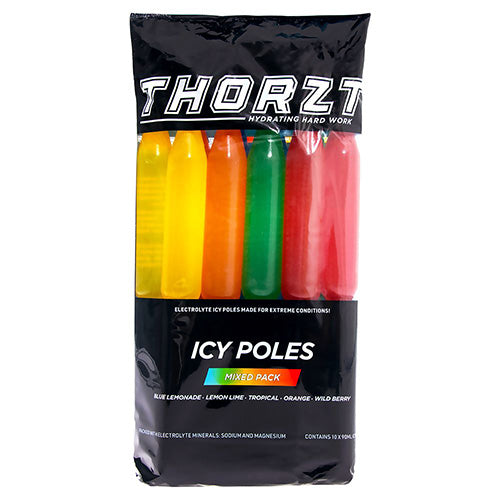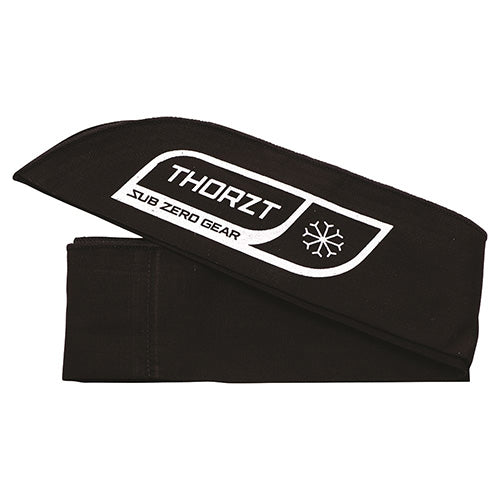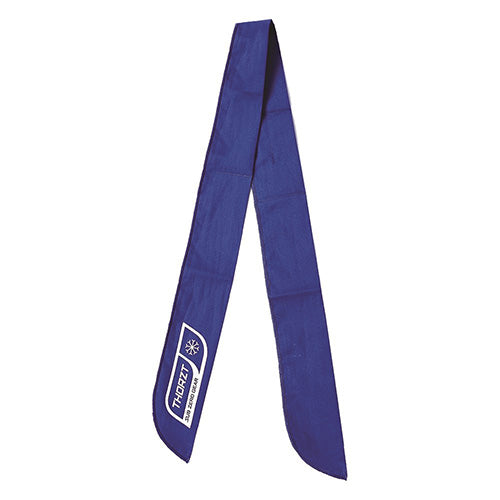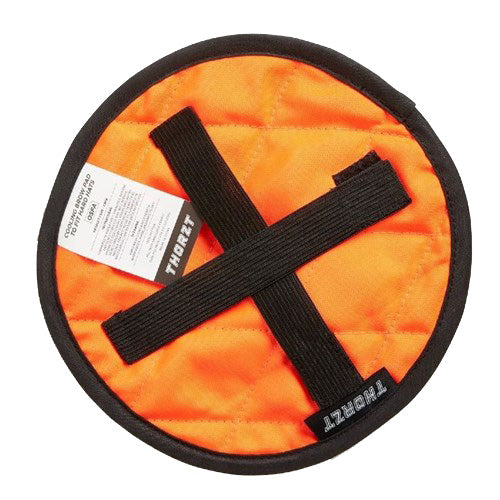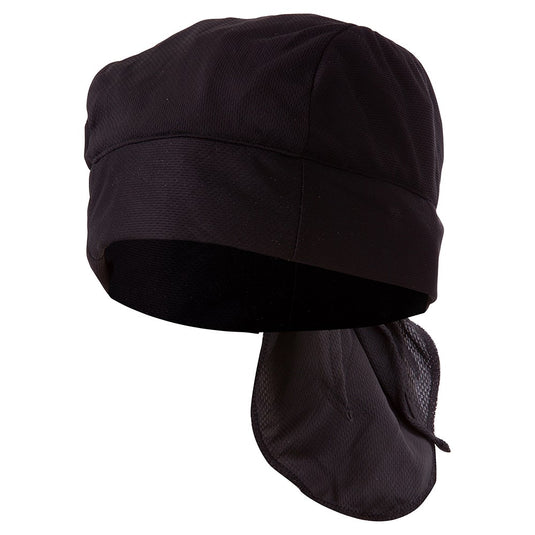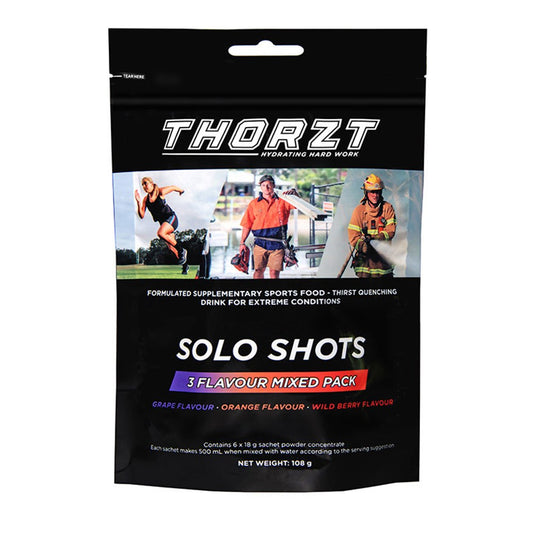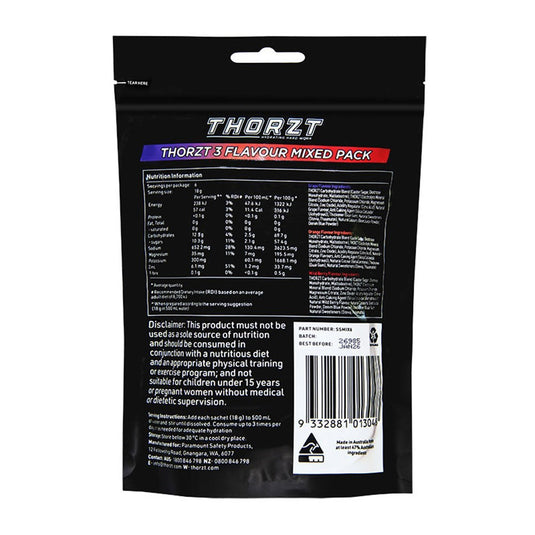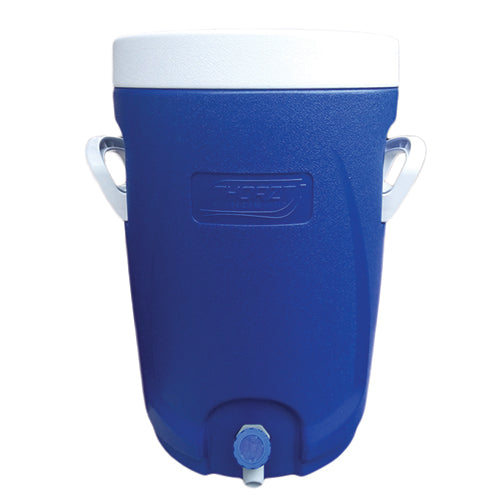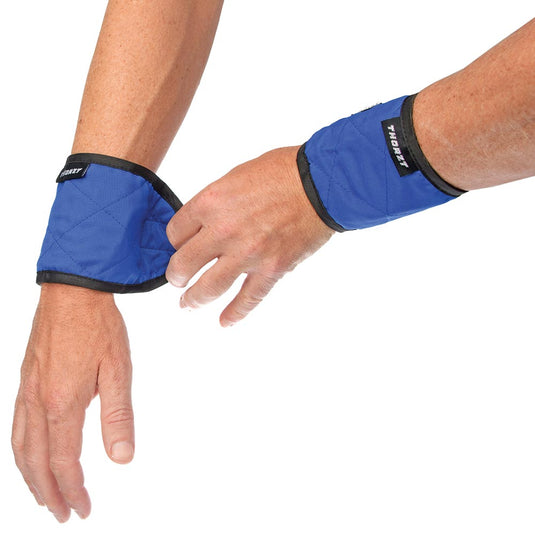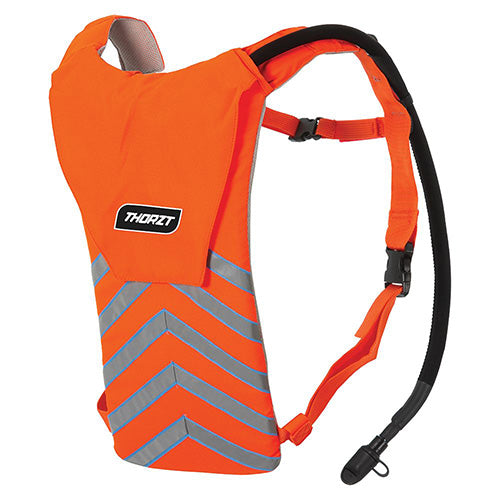
HEAT STRESS MANAGEMENT
In high temperature working environments such as confined spaces and outdoors, workers can lose anywhere from 1L – 2.5L of fluid per hour through sweat. When combined with adequate water consumption, a specially formulated mixture of electrolytes, such as the THORZT hydration range, can assist in replacing those fluid losses and re-establish the correct fluid-electrolyte balance.
How well you are re-hydrated will depend on how much fluids are being consumed compared to the level of activity and heat you are working in. More fluids = more hydration! And don’t forget, water does not contain all the electrolytes, BCAAs and vitamins your body requires to stay optimally hydrated.
Safety:
- 1 - 2% dehydration, workers experience decreased cognitive abilities, reduced concentration and alertness, and slower reaction times. Note: 1% dehydration is about an 800ml fluid deficit for an 80kg adult male.
- 3% dehydration can slow reaction times to the same extent as having 0.08 Blood Alcohol Content (BAC).
At 0.08 BAC you are 5 times more likely to crash your car. Think about how much more likely you are to have a workplace accident when dehydrated?
Productivity:
- 1% dehydration has been shown to cause a 12% reduction in worker productivity.
- 2% dehydration your heart rate increases by up to 8 beats per minute, increasing perception of effort, and decreasing performance.
- 3 - 4% dehydration your heart rate increases by up to 12 beats per minute, your capacity for muscular work declines and worker productivity decreases by up to 50%.

HOW TO MONITOR HYDRATION IN 3 EASY STEPS!
- Monitor urine colour: A clear or light yellow fluid indicates you are adequately hydrated. A yellow fluid indicates that you should increase fluid intake due to mild dehydration. If your urine is a a dark yellow-gold colour, then you are severely dehydrated and should immediately replenish lost fluids and seek medical attention. Keep in mind that urine colour can be affected by other dietary supplements such as vitamin B; so it's best to consider diet and lifestyle when following these steps.
- Monitor fluid intake: Drink 250mls of water every 15 minutes in warm environments. Remember to increase electrolyte intake when experiencing increased sweating.
- Monitor dehydration symptoms:
- Reduced performance
- Slower reaction times
- Thirst
- Weight loss (each kilogram of weight loss is equivalent to approx. one litre of fluid.)
WHY WATER IS NOT ENOUGH...
When we sweat we don't just lose water but also essential salts and minerals known as electrolytes. Electrolytes play a number of key roles within the body, and one such role is water retention.
Replacing water without also replacing electrolytes can cause 'involuntary dehydration' (ID), whereby despite drinking lots of water, our bodies fail to rehydrate. ID can be difficult to detect, as the lower concentration of electrolytes in the system causes urine to run clear.
Electrolyte drinks replace water alongside electrolytes, restoring the optimal fluid:electrolyte balance and preventing ID. The sodium in electrolyte drinks stimulates the thirst response, encouraging fluid consumption.
Provision of flavoured alternatives along with water have been found to increase fluid consumption by 50%. Electrolyte drinks are a great tasting alternative to water, and provide many nutritional benefits.
During dehydration, carbohydrate-electrolyte drinks increase fluid retention by 25%. Carbohydrate-electrolyte drinks that contain amino acids increase fluid retention by up to 40%!

HYPONATRAEMIA
The maximum rate our bodies can absorb water is around 250ml every 15-20 minutes. Attempting to drink larger quantities of water in less time can sometimes lead to negative side effects such as headaches, nausea, vomiting, and even intoxication (hyponatraemia).
Hyponatraemia occurs when we have lower than usual salt levels in our blood plasma. It is usually the result of over-intake of water or a failure to replace lost salts (also known as electrolytes) after periods of increased sweating.
As previously mentioned above, in warmer environments workers can experience sweat rates between 1L-2.5L an hour. Exact rates vary depending on the intensity of the work and extremity of the heat, acclimatisation of the worker and weight of protective clothing & PPE being worn.
Most sports drinks are isotonic containing between 4-8% carbohydrates. They are designed to replenish carbs and rehydrate simultaneously. However the higher sugar content and osmolarity slows down the rate of fluid absorption.
So if heat stress is of high concern, consider using a specialist rehydration product such as THORZT.
HYDRATION TIPS
Before work:
- 1 x cup of water (250mls) before bed
-
1 x cup when you wake up with electrolytes (eg THORZT)
-
1 x cup on your way out the door or just before you start work
At work:
- Sip an 800ml drink bottle, and aim to refill at least once every hour. For every 3 x cups of water, drink 1x cup of hypotonic electrolyte mix (eg THORZT). Increase electrolyte intake when experiencing heavy sweating.
After work:
- Sip 800ml drink bottle filled with THORZT electrolyte solution, the branch chain amino acids will aid muscle recovery and magnesium will reduce cramping.
Information on this page has been provided by THORZT HYDRATION (https://thorzt.com/). Active Safety & Thorzt have tried to ensure it's accuracy, but the PCBU (Person Conducting a Business or Undertaking) is responsible for identifying risks and taking measures to prevent them.

THE THORZT FORMULA
Electrolytes are naturally occurring essential minerals that control osmosis or movement of water within the body. Electrolytes also help maintain the acid-base balance required for normal cellular activities. Common electrolytes include Potassium, Calcium, Sodium, Chloride and Magnesium. The body depends on electrolytes to perform vital functions by sending electrical signals from the brain to nerves that activate your muscles to perform mechanical functions. Maintaining this electrical capability and voltage output of cellular communication is dependent on electrolytes. Most bodily functions require electrolytes, especially during neuromuscular processes. When the body loses fluid and electrolytes, both must be replaced for the body to rehydrate, retain fluid and return to efficient functioning before heat illness sets in. A common result of strenuous physical work or exercise is electrolyte loss. According to research, a deficiency in electrolyte may reduce physical performance and capacity as well as contribute to muscle cramps and weakness and injuries.
Sodium is directly related to the control of body water, enhancing water absorption. Sodium also stimulates thirst, which increases voluntary drinking. The greater the sodium concentration of the hydration beverage the greater the restoration of fluid balance.
Also aids in water absorption (lesser extent than Sodium) assists in muscle cramping.
Helps hold onto Potassium – water absorption. Allows the cell to use carbohydrates and amino acids. Assists in muscle cramping.
Help maintain structural integrity of proteins and help regulate gene expression.
Branch Chain Amino Acids play an essential role in protein synthesis and muscle building as well as recovery, accounting for over a third of Essential Amino Acids. The addition of amino acids to carbohydrate-electrolyte drinks has been shown to increase fluid retention 15% greater than carbohydrate-electrolyte-only drinks, and 40% greater than water.
The B vitamins are also important for a normal appetite, good vision, healthy skin and nervous system, and red blood cell formation. They function as coenzymes that help the body obtain energy from food and drink. The body needs vitamin C, also known as ascorbic acid or ascorbate, to remain in proper working condition. Vitamin C benefits the body by holding cells together. Since our bodies cannot produce or store vitamin C, an adequate daily intake of this nutrient is essential for optimum health.
Ready to hydrate and keep cool?
We are here to help you stay on top of your workplace and weekend hydration & cooling needs. Click the link below to see the Thorzt product range, or contact the Active Safety team for expert assistance to put together a customised solution for your workplace needs. Remember to subscribe to our email newsletter at the bottom of the page to get up to date information about workplace and personal safety.






